I may be slow, but at least I’m consistent! It was over two weeks ago since my last post when I promised these McDonnell Douglas DC-9-40 side view illustrations “soon”, and…well…sorry for the slight delay.
The main reason for the delay is that I had to go back and modify the engines on the -50 template. It turns out that I depicted them slightly larger than they were in real life, and since I am such a stickler for accuracy, I couldn’t proceed forward without going back and fixing that little goof.
In a nutshell, I incorrectly assumed that the engines were the exact same size as they were on the MD-80, but it turns out that isn’t the case. Oh well – as you can see, I’m learning a lot about individual aircraft types by creating these templates!
McDonnell Douglas DC-9-40 side view templates
Just as I predicted, creating the side view illustrations / blueprints of the DC-9-40 was a relatively simple process. As a matter of fact, I don’t think that I’d be able to tell the difference between a -40 and a -50 if I didn’t see the two of them together side-by-side. They are nearly identical aircraft, minus a few little details and overall fuselage length.
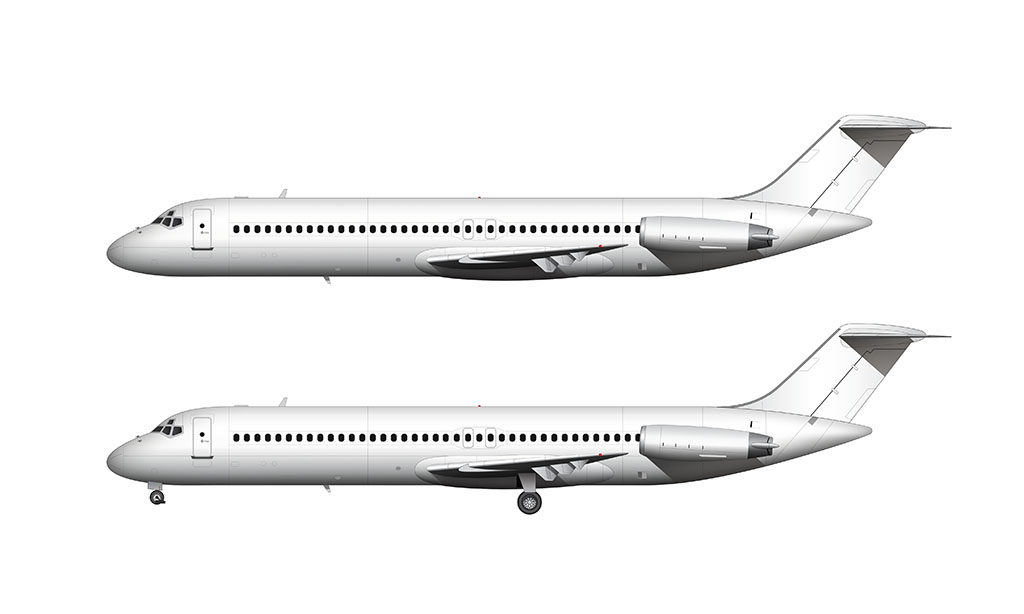
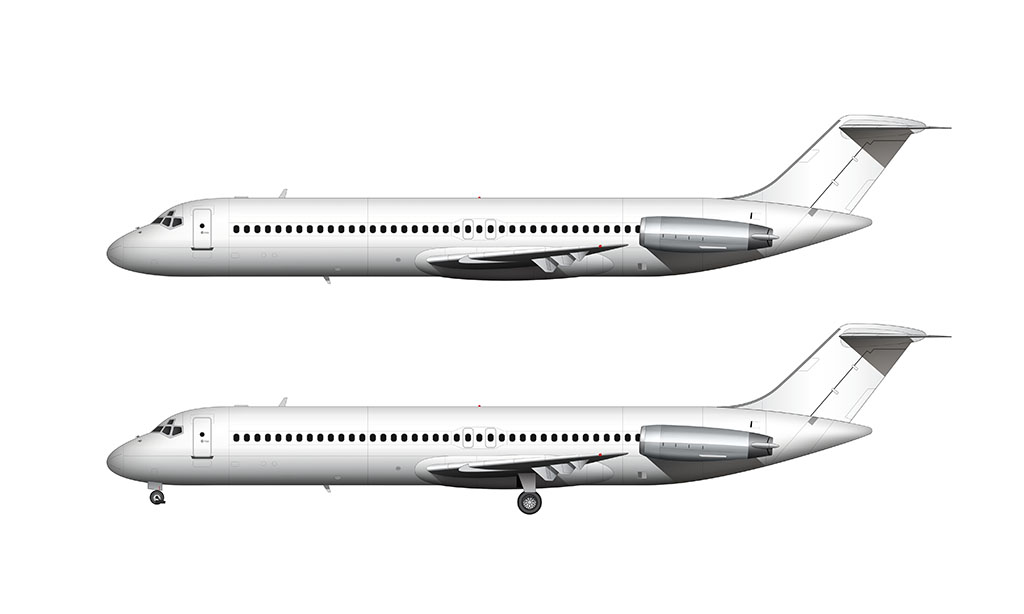
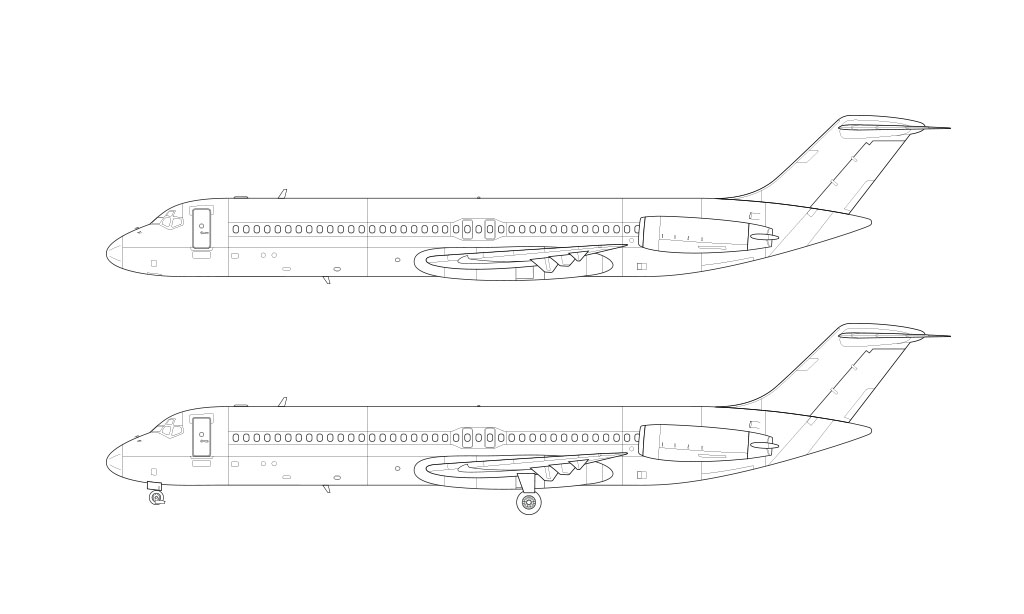

As you can see, I decided to create two versions all-white template. From doing all the research (and looking at hundreds of pics), I noticed that the vast majority of the DC-9-40s had bare metal engines. Airline liveries of the time didn’t feature painted engines like we see these days, so I thought it was best to provide of a bare-metal option as well.
I’d also like to mention that I know my illustration style is somewhat on the “exaggerated” side of the spectrum. Yeah, the way I illustrated the bare metal engines is slightly inaccurate, as I’m showing a high-gloss finish which wasn’t actually the way it was in real life.
If you’re looking for 100% accuracy in your illustrations, I would suggest blurring out the hard reflection that runs down the length of the engine (just so it doesn’t look so glossy and shiny). Of course I could’ve done that in these templates, but my personal style favors “bling” wherever possible, and I’m totally diggin’ the hard-gloss look.
What is the DC-9-40, and how did they differ from previous versions?
Launched in 1968 with Scandinavian Airlines, the DC-9-40 was essentially an evolution of the DC-9-30. A total of 71 were produced.
Anyway, from what I can tell, there weren’t many differences between a DC-9-30 and the DC-9-40. The only major change was fuselage length, along with slightly different (more advanced) engine option. For the record, the fuselage length increase was exactly 6 ft 6 in (2 m). Not a huge stretch, but it was enough to increase passenger capacity up to 125.
Do be sure to read my post about the DC-9-50 illustrations, where I talked a little bit about how the DC-9-40 differed from the -50 series.
What are all the visual differences between a DC-9-40 and a DC-9-30?
As I just mentioned, there really isn’t all that much. Here are a few specific visual differences that I noticed while creating these templates:
- There were five more windows per side on the DC-9-40
- Some of the sensors and the access panels in the fuselage are different
Other than that, pretty much everything else is the same (in terms of external visuals). The wing, horizontal stabilizer, vertical stabilizer, landing gear, etc. are all nearly identical.

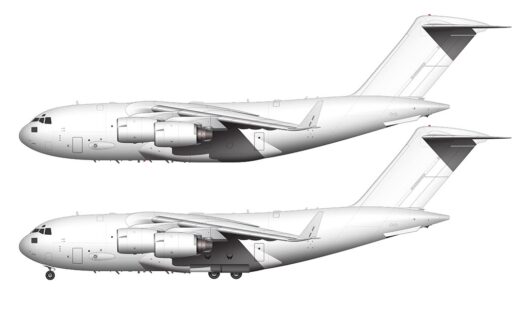
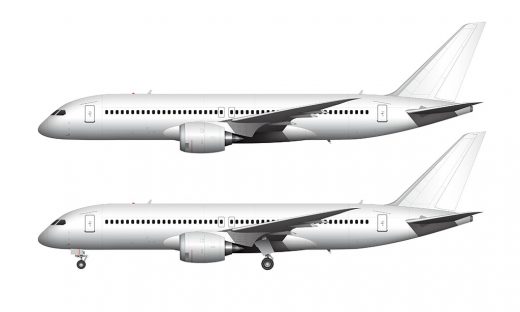
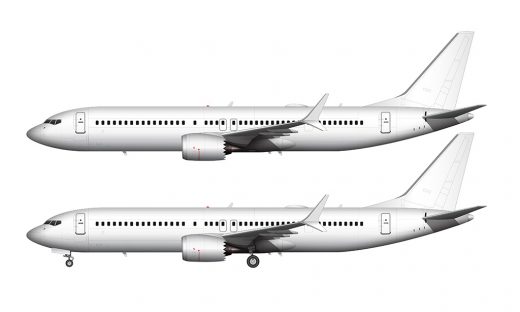
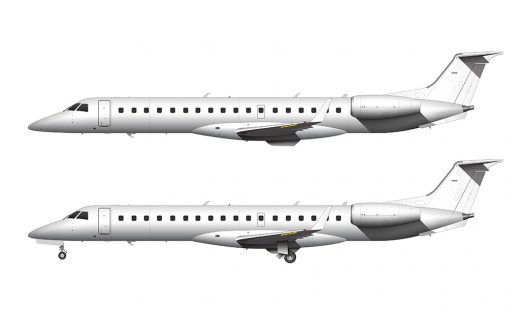
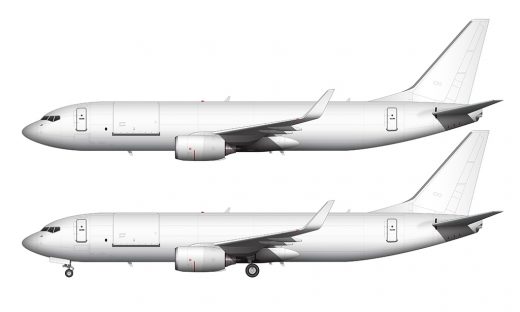
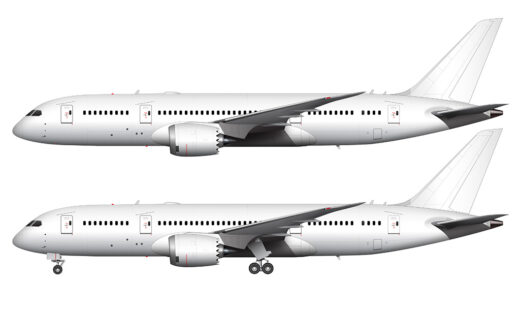
Hi my name is Francisco Tames first A320 captain to retired from Volaris Airlines in Mexico. I also flew DC-9s for 19 years in Aero California Airlines based in La Paz Baja California
Regards
Francisco
Hola Francisco! I remember seeing Aero California DC-9’s at LAX all the time (back in the late 90s), and I sure do miss them. I regret not ever having a chance to fly on one of them either.
Someday (if I can ever find the time) I’ll do an entire post dedicated to the Aero California livery. That should be fun…